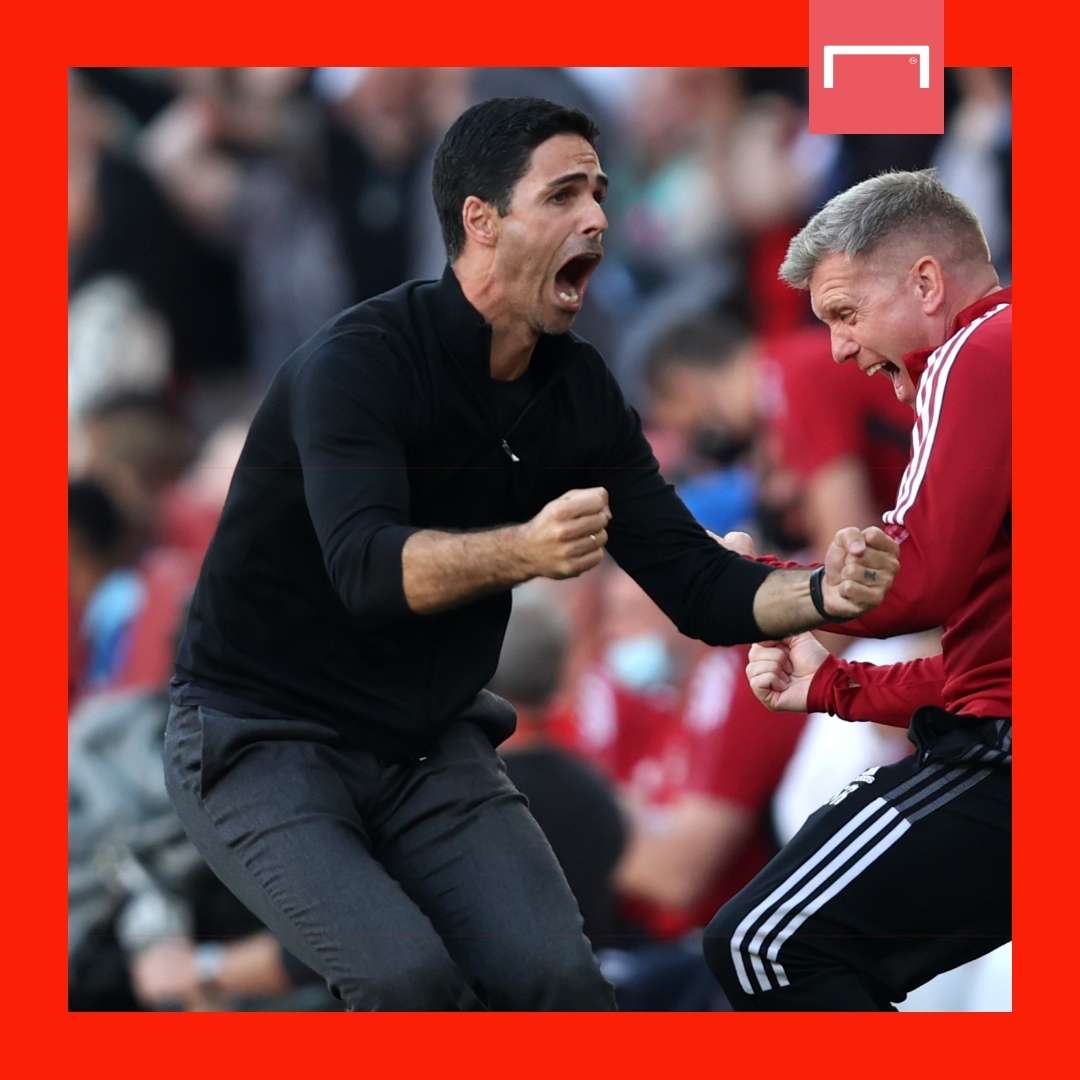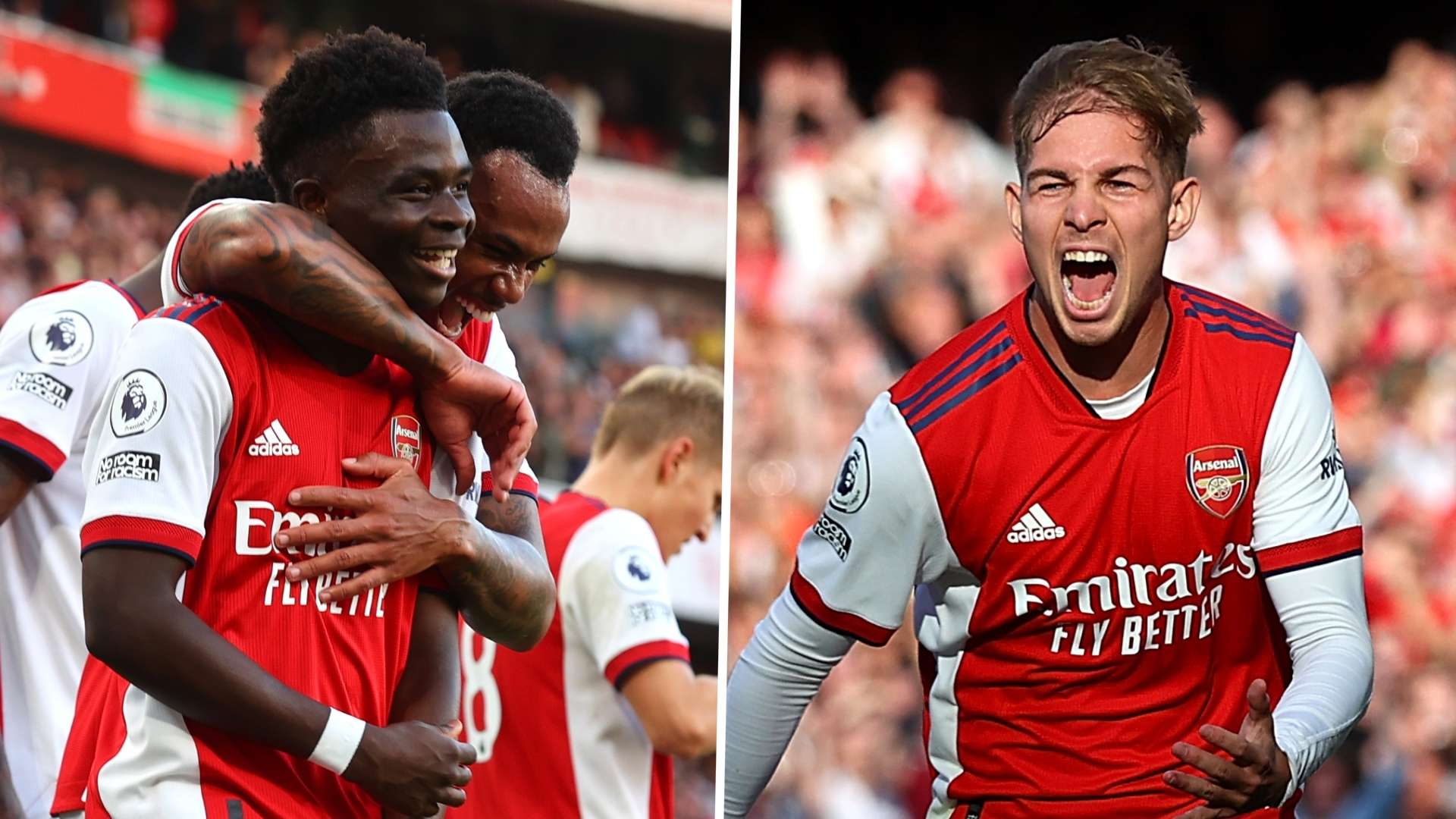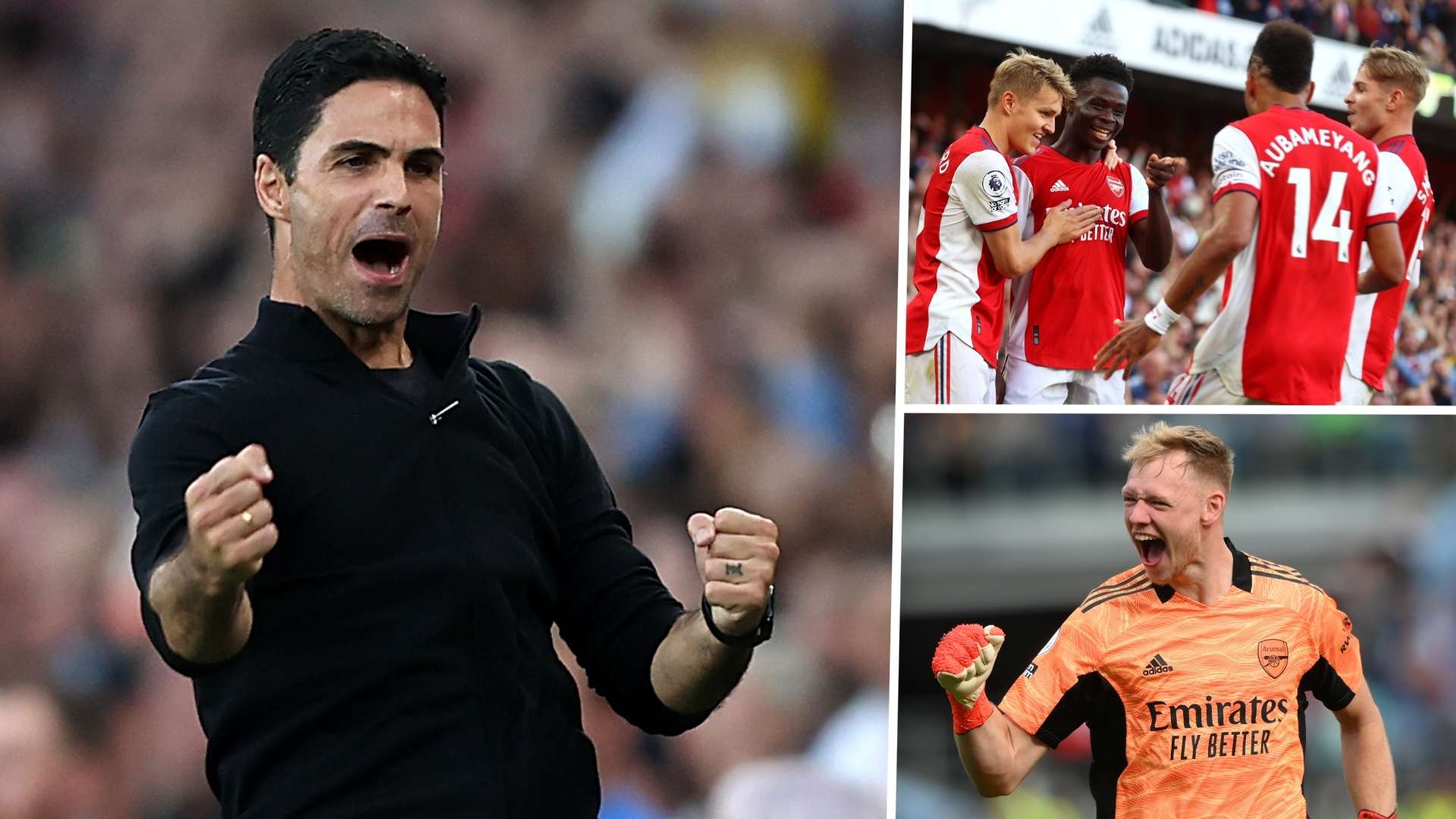On the eve of the new Premier League season, the overwhelming majority of fans and pundits felt that Mikel Arteta's days as Arsenal boss were numbered.
He was seen as too rigid in his tactics, as the Gunners' static possession and crumbling defence left their manager on the brink.
But quietly, beneath the surface, Arteta has always been building towards something.
First, there were very good signs in his first half-season in charge, when Arsenal regained some structural integrity following the wilderness of Unai Emery's final few months.
Things went badly wrong in the pandemic-hit 2020-21 season, and yet towards the end Arteta was starting to bring things together – even if few noticed. His team won 18 points from their final 10 Premier League games, putting them fourth in the form table, while their rolling xG (the difference between 'Expected Goals' and 'Expected Goals Against' over a series of games) showed a steady improvement:
The reason for Arteta's difficulties, and for the lack of recognition of (tentative) progress, is that his tactical ideology, heavily inspired by the work of his mentor Pep Guardiola, requires near perfection from each component part to work; a single cog out of joint and the entire thing falls apart, such is the high risk and immaculate detail of the overarching structure.
Guardiola's first year at Manchester City – when things looked confused and pundits wondered if he could really succeed in England - offers some clues as to why things looked so muddled for Arteta.
In short, high-energy possession football defined by perfect positional play - a swarming shape that moves as one – both on and off the ball generally looks like pure chaos right up until the moment it does not.
 Getty/Goal
Getty/Goal
Arsenal's 3-1 victory in the north London derby was, perhaps, that moment for Arteta.
For much of Arteta's tenure it has been assumed he does not share much of the same philosophy of Guardiola, but that was merely a case of conflating the outcome with the intention. Now that the pieces are falling into place, it is clear Arteta is very much a disciple.
The basic idea is to pass neatly through the lines in build-up play, drawing the opposition forward and – by evading the press – opening up the pitch for quick, vertical attacks into the final third.
Arsenal are expected to press high and hard, to dominate possession, and to spread evenly horizontally and vertically across the pitch in Guardiola-esque demarcated zones, with plenty of positional rotation used to confound the opposition.
All of this was brilliantly on show in the win over Tottenham, a game that proved how invaluable the Gunners' summer signings are to enacting Arteta's tactical strategy.
Arsenal dominated through central midfield thanks to the superb interplay between Martin Odegaard and Emile Smith Rowe, whose elegant control under pressure created the crisp passing triangles we saw throughout the game.
But aside from their progressive passing through the middle (made easier by Spurs completely vacating the area for long spells) Arsenal's dominance came from Arteta's cleverly shape-shifting formation.
On the ball, Kieran Tierney moved forward to create a front five while Takehiro Tomiyasu – signed specifically for this purpose – shifted across to make a back three.
Odegaard then moved out to the right to pick up the ball on the outside of the Spurs midfield, counter-balanced by Smith Rowe on the other side. With Pierre-Emerick Aubameyang in a traditional centre-forward role and Bukayo Saka dipping in from the right (ensuring he and Odegaard were never occupying the same vertical line), Arteta had his best 11 working perfectly in sync.
 Getty/Goal
Getty/Goal
The burgeoning partnership between Saka and Smith Rowe was in full flow again, but now aided by meticulously organised positioning and movement around them, their energy and purposeful running became the defining image of Arsenal's performance.
These two, with Odegaard silkily tying them together, are the players to build this team around – symbolically and literally.
Behind them, the introduction of Ben White and Aaron Ramsdale into the defensive unit is equally important. Both players represent a significant improvement in terms of passing out from the back, with Ramsdale's distribution and White's capacity to play a forward pass under pressure giving Arteta the foundation he lacked last year.
Arsenal are now in control, able to work through the opponent's press in order to release Saka, Smith Rowe, and Aubameyang into the final third. That gives the whole team a newfound sense of confidence.
And the signs are just as positive in central midfield, where Thomas Partey can wriggle through the lines while screening the defence and Granit Xhaka – always an excellent passer – can act as the metronome, though his three-month injury lay-off with a knee injury is concerning.
That completes a first 11 that, when all available, will play together in the majority of Premier League games this season, and could even put Arsenal in contention for a Champions League spot.
Perhaps that is a step too far this season, and certainly not an expectation. Arsenal fans would accept tangible signs of progression, a top-six finish, and, most importantly, a tactical vision – a DNA – by which to measure that progress.
The win in the north London derby, when taken together with signs revealed in flashes over the last 18 months, suggests Arsenal have the right manager to give supporters what they want.



